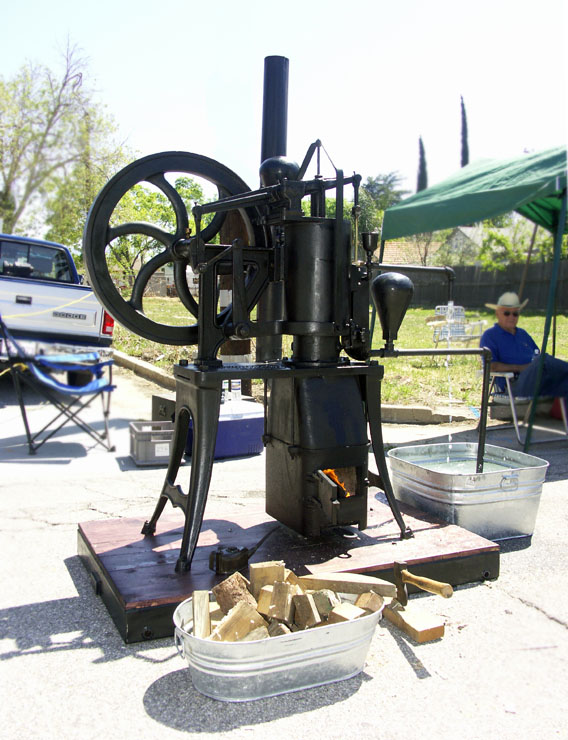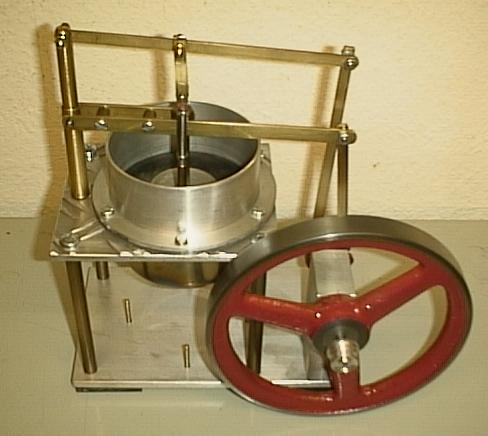|
Turn Point Light
The Turn Point Light Station is an active aid to navigation overlooking Haro Strait from the western tip of Stuart Island, San Juan County, Washington, in the northwest of the United States. The light marks a sharp turn in the shipping lanes at the transition between Haro Strait and Boundary Pass. History Operations at Turn Point commenced in 1893 with the construction of a fog signal building, a two-story keeper's quarters, and a barn. The structures were designed by U.S. Lighthouse Board architect Carl W. Leick. The station's first light was a lens lantern displayed from a post located close to the point. A Daboll trumpet served as the fog signal. As originally configured, the Daboll trumpet was powered by compressed air furnished by air-pumps driven by two Rider hot-air engines (a form of Stirling cycle engine). This machinery, and a supply of coal to fuel the engines, was located in the fog signal building. The hot air engines were found to be underpowered. I ... [...More Info...] [...Related Items...] OR: [Wikipedia] [Google] [Baidu] |
Stuart Island (Washington)
Stuart Island is one of the San Juan Islands, north of San Juan Island and west of Waldron Island in the U.S. state of Washington. The island is home to two communities of full and part-time residents, a state park, a one-room schoolhouse, and two airstrips (Stuart Island Airstrip - 7WA5 with a grass runway, and Stuart Island West - 2WA3 with a dirt runway). Facilities Two sites, both part of Stuart Island State Park, are on public lands. One is located near the center of the island, and another is on the western coast, the site of the Turn Point Light Station, a lighthouse guiding shipping in the busy waters of Boundary Pass to the island's north. Turn Point Light Station is on land administered by the Bureau of Land Management's Spokane District, Wenatchee Resource Area, Lopez Island Office. The lighthouse and nearby "Lover's Leap" are popular hiking destinations accessible by county road. Sheltered anchorages for boaters can be found in Reid Harbor and Prevost Harbor, wi ... [...More Info...] [...Related Items...] OR: [Wikipedia] [Google] [Baidu] |
Rider-Ericsson Engine Company
The US Rider-Ericsson Engine Company was the successor of the DeLamater Iron Works and the Rider Engine Company, having bought from both companies their extensive plants and entire stocks of engines and patterns, covering all styles of Rider and Ericsson hot air pumping engines brought out by both of the old companies since 1844, excepting the original Ericsson engine, the patterns of which were burned in the DeLameter fire of 1888. Engines The company specialized in hot air pumping engines. A hot air engine is an external combustion engine. All hot air engines consist of a hot side and a cold side. Mechanical energy is derived from a hot air engine as air is repeatedly heated and cooled, expanding and contracting, and imparting pressure upon a reciprocating piston. Early hot air engines In his patent of 1759, Henry Wood was the first to document the powering an engine by the changing volume of air as it changed temperature. George Cayley was the first to build a working mode ... [...More Info...] [...Related Items...] OR: [Wikipedia] [Google] [Baidu] |
Lighthouses Completed In 1936
A lighthouse is a tower, building, or other type of physical structure designed to emit light from a system of lamps and lenses and to serve as a beacon for navigational aid, for maritime pilots at sea or on inland waterways. Lighthouses mark dangerous coastlines, hazardous shoals, reefs, rocks, and safe entries to harbors; they also assist in aerial navigation. Once widely used, the number of operational lighthouses has declined due to the expense of maintenance and has become uneconomical since the advent of much cheaper, more sophisticated and effective electronic navigational systems. History Ancient lighthouses Before the development of clearly defined ports, mariners were guided by fires built on hilltops. Since elevating the fire would improve the visibility, placing the fire on a platform became a practice that led to the development of the lighthouse. In antiquity, the lighthouse functioned more as an entrance marker to ports than as a warning signal for reefs and ... [...More Info...] [...Related Items...] OR: [Wikipedia] [Google] [Baidu] |
Lighthouses Completed In 1893
A lighthouse is a tower, building, or other type of physical structure designed to emit light from a system of lamps and lenses and to serve as a beacon for navigational aid, for maritime pilots at sea or on inland waterways. Lighthouses mark dangerous coastlines, hazardous shoals, reefs, rocks, and safe entries to harbors; they also assist in aerial navigation. Once widely used, the number of operational lighthouses has declined due to the expense of maintenance and has become uneconomical since the advent of much cheaper, more sophisticated and effective electronic navigational systems. History Ancient lighthouses Before the development of clearly defined ports, mariners were guided by fires built on hilltops. Since elevating the fire would improve the visibility, placing the fire on a platform became a practice that led to the development of the lighthouse. In antiquity, the lighthouse functioned more as an entrance marker to ports than as a warning signal for reefs ... [...More Info...] [...Related Items...] OR: [Wikipedia] [Google] [Baidu] |
Orca
The orca or killer whale (''Orcinus orca'') is a toothed whale belonging to the oceanic dolphin family, of which it is the largest member. It is the only Extant taxon, extant species in the genus ''Orcinus'' and is recognizable by its black-and-white patterned body. A cosmopolitan species, orcas can be found in all of the world's oceans in a variety of marine environments, from Arctic Ocean, Arctic and Southern Ocean, Antarctic regions to tropical seas. Orcas have a diverse diet, although individual populations often specialize in particular types of prey. Some feed exclusively on fish, while others hunt marine mammals such as Pinniped, seals and other species of dolphin. They have been known to attack baleen whale calves, and even adult whales. Orcas are apex predators, as they have no natural predators. They are highly Social animal, social; some populations are composed of very stable matrilineal family groups (pods) which are the most stable of any animal species. Their ... [...More Info...] [...Related Items...] OR: [Wikipedia] [Google] [Baidu] |
San Juan Islands National Monument
San Juan Islands National Monument is a U.S. National Monument located in the Salish Sea in the state of Washington. The monument protects archaeological sites of the Coast Salish peoples, lighthouses and relics of early European American settlers in the Pacific Northwest, and biodiversity of the island life in the region. The monument was created from existing federal land by President Barack Obama on March 25, 2013 under the Antiquities Act. Geography The national monument consists of approximately 75 separate sites totaling roughly in area. They are managed by the U.S. Bureau of Land Management as part of the National Landscape Conservation System National Conservation Lands, formally known as the National Landscape Conservation System, is a collection of lands in 873 federally recognized areas considered to be the crown jewels of the American West. [...More Info...] [...Related Items...] OR: [Wikipedia] [Google] [Baidu] |
Foghorn
A foghorn or fog signal is a device that uses sound to warn vehicles of navigational hazards such as rocky coastlines, or boats of the presence of other vessels, in foggy conditions. The term is most often used in relation to marine transport. When visual navigation aids such as lighthouses are obscured, foghorns provide an audible warning of rock outcrops, shoals, headlands, or other dangers to shipping. Description All foghorns use a vibrating column of air to create an audible tone, but the method of setting up this vibration differs. Some horns, such as the Daboll trumpet, used vibrating plates or metal reeds, a similar principle to a modern electric car horn. Others used air forced through holes in a rotating cylinder or disk, in the same manner as a siren. Semi-automatic operation of foghorns was achieved by using a clockwork mechanism (or "coder") to sequentially open the valves admitting air to the horns; each horn was given its own timing characteristics to help marine ... [...More Info...] [...Related Items...] OR: [Wikipedia] [Google] [Baidu] |
Diaphragm (acoustics)
In the field of acoustics, a diaphragm is a transducer intended to inter-convert mechanical vibrations to sounds, or vice versa. It is commonly constructed of a thin membrane or sheet of various materials, suspended at its edges. The varying air pressure of sound waves imparts mechanical vibrations to the diaphragm which can then be converted to some other type of signal; examples of this type of diaphragm are found in microphones and the human eardrum. Conversely a diaphragm vibrated by a source of energy beats against the air, creating sound waves. Examples of this type of diaphragm are loudspeaker cones and earphone diaphragms and are found in air horns. Loudspeaker In a dynamic loudspeaker, a diaphragm is the thin, semi-rigid membrane attached to the voice coil, which moves in a magnetic gap, vibrating the diaphragm, and producing sound. It can also be called a cone, though not all speaker diaphragms are cone-shaped. Diaphragms are also found in headphones. Quality midran ... [...More Info...] [...Related Items...] OR: [Wikipedia] [Google] [Baidu] |
Stirling Cycle Engine
A Stirling engine is a heat engine that is operated by the cyclic compression and expansion of air or other gas (the ''working fluid'') between different temperatures, resulting in a net conversion of heat energy to mechanical work. More specifically, the Stirling engine is a closed-cycle regenerative heat engine with a permanent gaseous working fluid. ''Closed-cycle'', in this context, means a thermodynamic system in which the working fluid is permanently contained within the system, and ''regenerative'' describes the use of a specific type of internal heat exchanger and thermal store, known as the ''regenerator''. Strictly speaking, the inclusion of the regenerator is what differentiates a Stirling engine from other closed-cycle hot air engines. In the Stirling engine, a gas is heated and expanded by energy supplied from outside the engine's interior space (cylinder). It is then shunted to a different location within the engine, where it is cooled and compressed. A piston (or ... [...More Info...] [...Related Items...] OR: [Wikipedia] [Google] [Baidu] |
Daboll Trumpet
A Daboll trumpet is an air trumpet foghorn which was developed by an American, Celadon Leeds Daboll, of New London, Connecticut. It was basically a small coal-fired hot air engine, which compressed air in a cylinder on top of which was a reed horn. The Daboll trumpet, consists of a steel reed vibrating within a horn, which uses the hot air engine to force cold air by means of an air pump into a boiler, from which it escapes into the horn through a valve, causing the vibrations of the reed, which are regulated by an automatic cam. Daboll's cousin, Charles Miner Daboll (1823-), inventor of the Daboll bushing, is credited with developing the Daboll trumpet for practical use. The following citation is from: ''Scientific American Supplement'', Vol. XIX, No. 470, Jan. 3, 1885. The Daboll trumpet was invented by Mr. C.L. Daboll, of Connecticut, who was experimenting to meet the announced wants of the United States Lighthouse Board. The largest consists of a huge trumpet seventeen ... [...More Info...] [...Related Items...] OR: [Wikipedia] [Google] [Baidu] |






